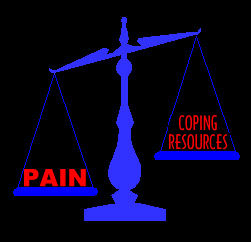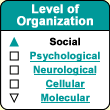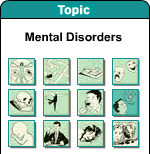|
|

It was once widely assumed that about 15% of all people who suffered from depression would eventually commit suicide. But more recent studies cite lower figures (2 to 9%), depending on whether the individual has been hospitalized for depression in the past and has attempted suicide before.
It has also been observed that while about 7% of all men who have experienced depression will end up committing suicide, only 1% of women will do so.

|
Research has shown that nearly 95% of people who committed suicide had deficiencies of serotonin in certain regions of their brains. Moreover, serotonin deficiency occurs three times more often in people who plan their suicides carefully and are hence more likely to complete them successfully.
Though serotonin levels might never become an objective factor for predicting suicide, they might become a useful means of identifying people at risk.
|
|
|
Suicide is rarely a coolly
reasoned decision. Most of the time, it is a reaction to very intense
feelings of loneliness, despair, worthlessness, or abandonment—in
short, symptoms
similar to those of depression, which is also the primary risk
factor for suicide.
The psychological suffering caused by these emotions overwhelms
the individual's resources for dealing with them, and suicide starts
to seem like the only way out of this intolerable pain. In this
sense, suicide encompasses two lengthy processes: the process of
mental decline that leads the individual to consider suicide, and
the especially
difficult mourning process that awaits the friends and relatives
who couldn't provide the help that this person needed.
The kinds of
pain and the reasons for suicide cited by suicidal people vary
widely. What may seem like no big deal to one person may seem
intolerable to someone else who has a different value system.
For example, being laid off from work might seem like a liberation
to one person, but a disaster to another. Likewise, if a variety
of people undergo the same negative experience, the point at
which the pain becomes intolerable depends on the resources
that each individual has for coping with it.
Having some suicidal ideas therefore doesn't mean that you
are morally weak, or crazy. It doesn't even mean that you really
want to die. It simply means that you currently suffering more
than you can handle. |
|
 |
But if someone else confides in you that they are entertaining
ideas of suicide, it's not good enough to just tell them to cheer
up. First, you must take the time to listen to them, to patiently
show them other ways of looking at things, and to direct them to
places where people will listen to them and help them with their
problems.
Since about half of all people who are suicidal are also clinically
depressed, the
treatments that are effective for depression can also give
suicidal people some relief. Among people who are suicidal but
not clinically depressed, abuse of psychotropic substances is often
involved. Alcohol,
for example, is a factor in about 20% of all suicides.
But as the philosophers,
sociologists, psychologists, and psychiatrists who have written
about suicide have noted many times, suicide is a multidimensional
phenomenon. It is multidimensional in the causes of the
psychological suffering involved; many different risk
factors, such as depression or drug abuse, can combine with personal,
family, or social crises to predispose someone to suicide. It is
also multidimensional with respect to the triggering threshold for
suicidal behaviour, which varies with the individual's history
and personality and the sources of social support that he or she
can draw on. This availability of social support is often a decisive
factor, and it is what makes suicide a phenomenon with a strong
social component.
|
|





